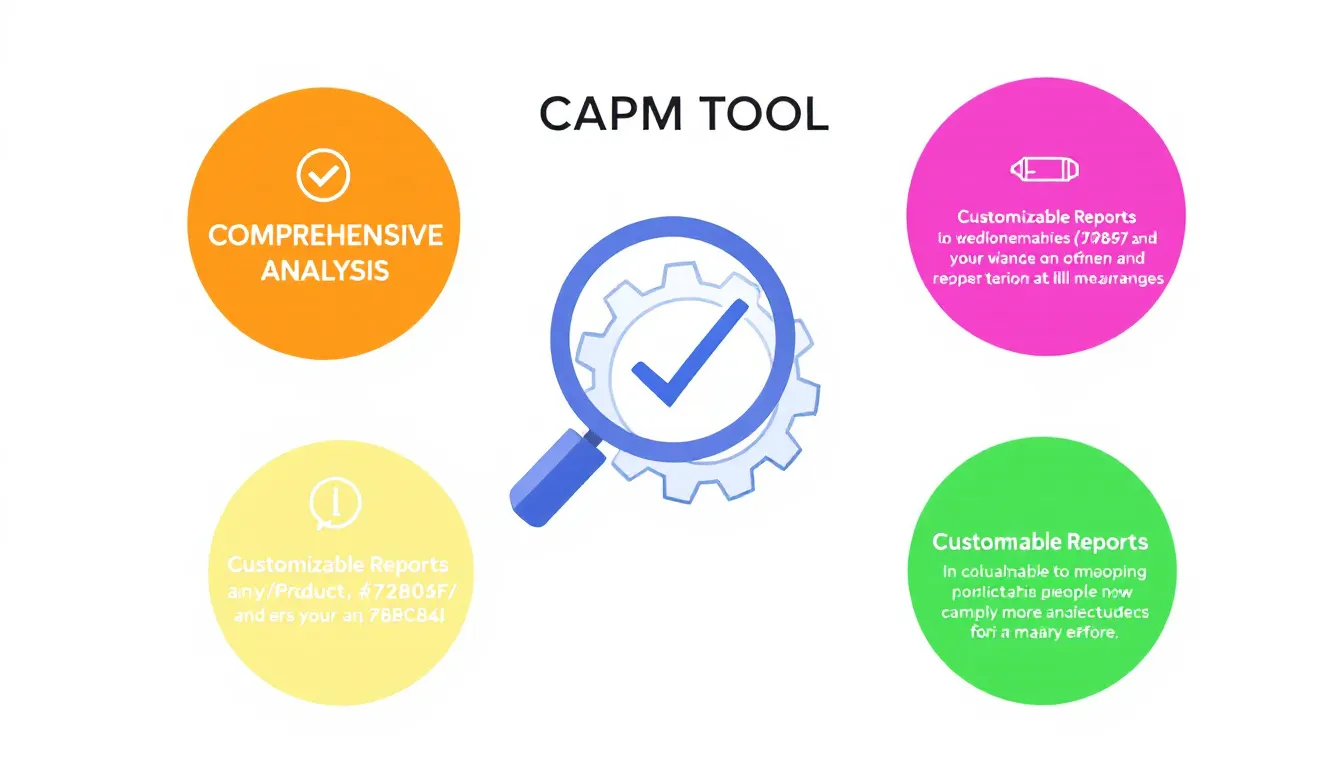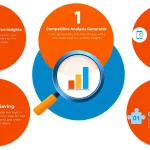Competitor Analysis Tool
Analyzing competitors...
Is this tool helpful?
How to Use the Competitor Analysis Tool Effectively
This competitor analysis tool helps you identify key market rivals for your product or service. To use it effectively, follow these steps:
- Enter the Product or Service: Provide the exact product or service you want to analyze. For example, you could enter “Electric bicycle with GPS tracking” or “Organic skincare cream.”
- Specify the Industry or Market: Clearly state the industry your product or service belongs to. Examples include “Personal electric vehicles” or “Natural beauty and wellness.”
- Add Geographic Scope (Optional): Define the area you want the analysis to focus on. This can be global regions such as “Asia-Pacific” or specific countries like “Germany.”
- List Key Features (Optional): Mention specific product attributes to help refine competitor identification. For example, “lightweight frame, long battery life, smartphone app connectivity” for the electric bicycle, or “vegan ingredients, SPF protection, cruelty-free testing” for skincare.
- Submit the Form: Once you provide the required details and any optional info, click the button to generate a detailed competitor analysis report.
After submitting, the tool processes your input and displays a report highlighting relevant competitors, their key characteristics, and insights into your market landscape.
What Is the Competitor Analysis Tool and Why Use It?
This competitor analysis tool helps you quickly identify direct and indirect rivals within your product’s industry. It uses up-to-date data and intelligent algorithms to scan markets and detect companies competing in your space.
Purpose and Key Benefits
The tool simplifies the competitor research process, providing you with actionable insights for strategic business decisions. Key benefits include:
- Save time: Avoid lengthy manual research by getting instant competitor lists.
- Comprehensive insights: Discover direct and indirect competitors with detailed profiles.
- Strategic advantage: Use competitor data to improve product features, pricing, and marketing.
- Market positioning: Understand where your product fits within the competitive landscape.
- Risk reduction: Identify threats and opportunities early to adapt your strategy.
Practical Uses of the Competitor Analysis Tool
1. Launching a New Product
If you plan to release, for example, a new eco-friendly packaging solution, use this tool to:
- Identify major competitors in the sustainable packaging sector.
- Analyze product features like compostability or recycled content.
- Review competitors’ pricing and distribution methods.
- Spot gaps that your product can fill.
- Develop a strong unique selling proposition (USP) based on competitor weaknesses.
2. Expanding Market Reach
When entering a new region, such as targeting the South American health foods market, you can:
- List key local competitors and distributors.
- Understand popular product lines and pricing strategies.
- Explore partnerships or acquisition opportunities.
- Tailor your entry approach based on competitor strengths and gaps.
3. Improving Competitive Strategy
If you manage a software firm offering project management tools, you can:
- Identify both direct competitors and broader SaaS providers.
- Analyze subscription and pricing models.
- Assess features competitors emphasize such as integrations or mobile apps.
- Craft a competitive strategy by highlighting your tool’s distinct benefits.
4. Preparing Investor Presentations
If you seek funding for an innovative renewable energy solution, use the tool to:
- Identify existing players and emerging startups in renewable energy technology.
- Analyze their technical features and partnership networks.
- Highlight market gaps your solution addresses.
- Build a well-informed pitch showcasing your competitive edge.
Addressing Common Challenges in Market and Competitor Research
Comprehensive Competitor Identification
The tool searches diverse data sources such as industry reports, trade databases, and public filings to ensure you don’t miss key competitors.
Detailed Competitor Profiles
You get rich profiles including data on market share, pricing, products, sales channels, and marketing tactics, letting you understand competitive strengths and weaknesses.
Identifying Unique Selling Propositions (USPs)
By analyzing competitor product features and messaging, the tool helps you pinpoint what makes your competitors stand out, so you can differentiate your offerings.
Automated SWOT Analysis
The tool automates SWOT (Strengths, Weaknesses, Opportunities, Threats) assessments for your competitors, saving time and aiding strategic decisions.
Market Trend Detection
Analyzing multiple competitors together reveals emerging industry trends and customer preferences, keeping you well-informed of shifting market dynamics.
Frequently Asked Questions (FAQ)
1. How often should I run competitor analyses?
Run analyses periodically—quarterly is a good baseline—to stay updated in fast-changing markets. Also, perform an analysis before major launches or expansion efforts.
2. Can this tool identify future or emerging competitors?
Yes. While focused on current competitors, it can highlight emerging players and startups to watch, helping you anticipate future market moves.
3. Does the tool cover global and local markets?
It adapts to your specified geographic scope, whether local, national, or international, providing tailored insights for each market size.
4. Can I analyze multiple products or services?
Yes. You can submit individual analyses for as many products or services as you want, enabling detailed study of different market segments.
5. Does it analyze indirect competitors?
Yes. The tool identifies both direct and indirect competitors by assessing market overlap, substitute products, and customer alternatives.
6. Can it assist with pricing strategies?
While it doesn’t set prices, the tool provides comprehensive competitor pricing data to help you develop competitive, market-aligned pricing.
7. How does it handle rapidly evolving markets?
It uses current data sources and recommends frequent analysis to keep pace with fast-moving sectors. Combine tool insights with ongoing market monitoring.
8. Is this tool suitable for non-profit or public sector use?
Yes. It can help identify similar organizations, collaborators, or alternative service providers in public or non-profit sectors.
Important Disclaimer
The calculations, results, and content provided by our tools are not guaranteed to be accurate, complete, or reliable. Users are responsible for verifying and interpreting the results. Our content and tools may contain errors, biases, or inconsistencies. Do not enter personal data, sensitive information, or personally identifiable information in our web forms or tools. Such data entry violates our terms of service and may result in unauthorized disclosure to third parties. We reserve the right to save inputs and outputs from our tools for the purposes of error debugging, bias identification, and performance improvement. External companies providing AI models used in our tools may also save and process data in accordance with their own policies. By using our tools, you consent to this data collection and processing. We reserve the right to limit the usage of our tools based on current usability factors.







